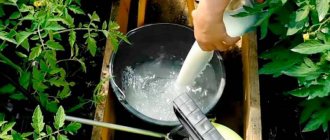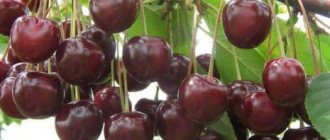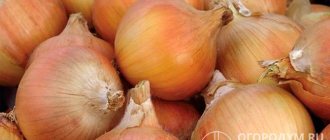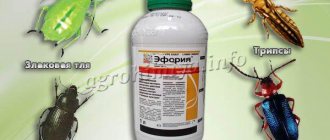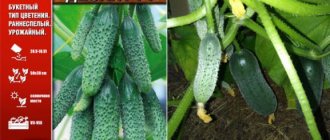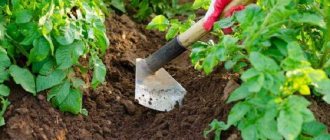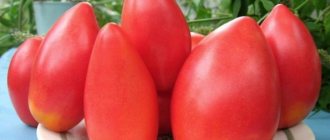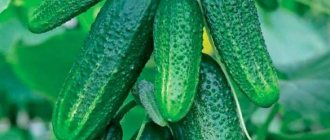Cultivated plants are often affected by fungal diseases that affect the above-ground parts of the plant, actively spreading throughout all plantings. As a result, you can lose the entire harvest. For treatment, as well as for prevention purposes, it is recommended to use a highly effective drug from the Alto Super group - a fungicide, the instructions for use of which state that the product has a systemic, contact effect, has a protective and disinfecting effect on plants.
Before using a fungicide, you should read the instructions for its use and strictly follow the instructions, observing the dosage and waiting periods.
Advantages of the product
Alto Super stands out from other fungicides due to a number of advantages:
- suitable for treatment, as well as for prophylaxis against a wide range of pathogens of fungal diseases;
- ensures qualitative and quantitative harvest;
- acts within 20 minutes after application, and after a week all pathogenic organisms will be destroyed;
- provides long-lasting and guaranteed protection;
- the solution is able to be evenly distributed over the surface of the vegetative organs.
Instructions for use of the fungicide Switch, application rates and analoguesRead
Important! The drug is suitable for use at different stages of the growing season and does not harm the plant at all
Advantages of a fungicide
The agrochemical has strengths and weaknesses. Among the advantages are:
- versatility, which consists in the prevention and treatment of diseases;
- effectively suppresses the activity of fungal pathogens;
- guarantees a full harvest;
- the effect of the drug begins after treatment with the working solution;
- does not wash off with water;
- low consumption rates;
- possibility of aerial processing;
- destroys harmful bacteria in a short time;
- possibility of processing at any stage of the growing season;
- guarantees long-term protection;
- compatible with most chemicals.
See also
Instructions for use and composition of Fital fungicide, consumption rates and analogues
Read
The systemic fungicide is suitable for combating most common diseases of cereal crops and sugar beets. The solution is non-toxic and does not harm nature.
How to properly prepare the working solution and its further use
The procedure and correctness of production of the product depends on the type of agricultural plant that needs to be processed.
Wheat
"Alto Super" can be used to process spring and winter wheat at different stages of its ripening. Consumption of the drug is 0.4 l/ha. The procedure is performed for prevention and when signs of fungal infections are detected. It is not recommended to process more than 2 times per season.
Barley
Spring and winter barley is often affected by rust, powdery mildew, and spotting. An effective way to get rid of barley from these diseases is “Alto Super”. Consumption of the product is 0.4 l/ha. Spray twice in one season.
Oats
This cultivated plant has poor resistance to crown rust and is also affected by red-brown spot. Apply 0.5 liters of Alto Super per 1 hectare. Treatment should begin immediately as soon as the symptoms of the disease are diagnosed, spraying 1-2 times.
Sugar beet
The only crop that this fungicide is suitable for, besides cereal plants, is sugar beets. The drug has a positive effect on the plant, increases glucose production and ensures the sweetness and juiciness of root crops. It is better to combine Alto Super with boron-based fertilizers and use the liquid as a top dressing.
Fungicide Alto Super
The yield of grain crops largely depends on a number of factors: agrotechnical, biological, weather. Biological factors include various infectious diseases to which grain crops are susceptible at all phases of their organogenesis: starting from seed germination and ending with sowing maturity of the grain.
To prevent the development of infectious diseases, the combined fungicide Alto Super has been developed. It reliably not only protects, but also in case of illness, treats grain crops, as well as sugar beets from diseases such as powdery mildew, various types of rust, ear diseases, leaf spot, cercospora blight, pyrenophorosis and other types of fungal diseases.
Alto Super fungicide is a preventive, curative and eradicating agent. This is due to the fact that the fungicide contains two active substances - propiconazole (250 g/l) and cyproconazole (80 g/l), belonging to the chemical class of triazoles.
Alto Super fungicide is available in the form of an emulsion concentrate. The fungicide is supplied to the shelves in plastic canisters with a volume of 5 liters.
Mechanism of action
After treating crops with Alto Super working solution, propiconazole and cyproconazole are quickly absorbed by plants, after which they begin to move acropetally along the xylem and are distributed in all plant tissues. Active substances, interfering with the biosynthesis of sterols in cell membranes, block the development of pathogens. The drug achieves its best effect when used in the early stages of the disease.
Advantages of Alto Star
- Effectively fights almost all fungal diseases that affect grain crops and sugar beets;
- Thanks to the action of active substances that quickly penetrate the treated plants, it reliably protects new shoots;
- Prevents the penetration of pathogens and stops their development, even if the plant is already affected;
- Provided that the instructions for use are followed, it does not cause resistance and is not phytotoxic;
- Compatible with most drugs intended for the protection of cultivated plants;
- The fungicide has a positive effect on the quality of sugar beets. For example, its use when there is a threat of moderate development of cercospora allows one to increase the yield of sugar by 1% compared to untreated crops;
- Alto Super does not pose a danger to the environment, however, there are restrictions on use in the sanitary zone near fishery reservoirs.
Instructions for use
Spraying of crops is carried out during their growing season. The first treatment with a fungicide is carried out when the degree of infection is more than 4%, repeated - after 2-3 weeks, if the disease is not completely eradicated.
Favorable hours for work are from 6 to 9 am or from 7 to 9 pm. To carry out work, you must choose a clear, calm day. The optimal air temperature is +25°C.
Spraying is carried out both mechanically and using aviation. When using aviation, the consumption rate of the working substance must be at least 50 l/ha; when mechanical processing, the solution consumption is 200-300 l/ha.
Advantages of the drug:
- Wide spectrum of action: suppresses all major diseases of grain crops and sugar beets during the growing season.
- Universal and flexible application: all major grain crops (spring and winter wheat, spring and winter barley, winter rye, oats) and sugar beets. Regardless of the stage of crop development during the growing season.
- Ensuring harvest quality.
- Fast initial action and long-term protection.
- Effective preventive and therapeutic effect.
- Low consumption rates.
- Excellent rain resistance.
Leave your review:
Compiled by: Velichko S.N., Ignatiev P.S.
Page added: 09/03/14 12:26
Features of the use of fungicide
This fungicide is used for different plants. Therefore, the concentration of the solution, the number of sprays and consumption for each crop will be different.
For grapes
A grape disease such as oidium causes a lot of trouble even for experienced gardeners, not to mention amateurs. Vineyards located in the northern zone are especially at risk.
The concentration of the working solution for spraying grapes depends on the purpose of its use. For the prevention of young animals, 3 ml of the drug is needed per 10 liters of water. Over subsequent years, the dose of Falcon is gradually increased. For the second year you will need 4 ml of the product, for 3-4 years - 6 ml.
The concentration of the mixture at the first signs of disease for first-year grapes is 6 ml (per 10 liters of water). For a bush that is 2 years old, use 12 ml of the product. In subsequent years, the amount of the drug increases to 20 ml per 10 liters of water. For 1 sq. m of leaf surface, 80 to 100 ml of working solution is consumed.
For roses
When using Falcon for ornamental plants, experts recommend mixing it with fertilizers. In this way you can get the maximum benefit from the drug. In addition, with this approach, the likelihood that the roses will become stressed is minimized, but the shrubs receive good comprehensive protection.
To prepare the solution you will need 10 ml of product and 10 liters of water. Next, according to the instructions, you need to prepare the fertilizer separately, and then mix it with the fungicide. You can spray the bushes using a spray bottle.
For tomatoes
Tomatoes, as you know, are most often susceptible to diseases such as powdery mildew, late blight, mycoses, and septoria. Falcon, in turn, effectively copes with these types of diseases.
You can spray tomatoes both during planting and during the active growing season. Tomatoes can be saved from powdery mildew even when the fruits have already set.
For cucumbers
The official instructions do not indicate that this fungicide can be used to treat cucumbers. But gardeners who actively use this remedy for the treatment and diseases of other crops also use Falcon on these vegetables. This is evidenced by reviews in which, by the way, summer residents are satisfied with the effect of the drug on cucumber bushes.
For beets
If dry reddish-brown spots appear on the beet foliage, this is the first sign that the vegetable is susceptible to a fungal disease. To preserve the harvest, it is recommended to spray the beet bed with the preparation several times a season during the period of active growth of green mass.
Consumption rate per 1 sq. m area is 80 ml. To obtain a working mixture, you need to dilute 6 ml of the product in 10 liters of water. After spraying, the beets are guaranteed to be protected for 20 days. It is recommended to re-treat after 2 weeks.
For strawberries
The most common strawberry disease is white spot. The development of this disease during the flowering period destroys up to 15% of the crop, and with severe infection - all 100% of the berries. Preventive treatment of plants with Falcon helps avoid this problem.
For cereals
Grain crops are especially susceptible to rust, powdery mildew, and septoria. On an industrial scale, the fungicide is used as a prophylactic against fungal diseases, as well as for the direct treatment of already infected plants.
For 100 liters of water, 600 ml of product is required. The application rate, both for the first spraying (during the growing season) and for repeated treatment (at the beginning of flowering for spring and winter wheat) is 0.6 l/ha, and for winter and spring barley – 0.5 l/ha.
Advantages of the product
Alto Super stands out from other fungicides due to a number of advantages:
- suitable for treatment, as well as for prophylaxis against a wide range of pathogens of fungal diseases;
- ensures qualitative and quantitative harvest;
- acts within 20 minutes after application, and after a week all pathogenic organisms will be destroyed;
- provides long-lasting and guaranteed protection;
- the solution is able to be evenly distributed over the surface of the vegetative organs.
Important! The drug is suitable for use at different stages of the growing season and does not harm the plant at all
Are there any disadvantages
In addition to the advantages of the Alto Super fungicide, it is important to identify the disadvantages:
- mandatory use of protective equipment when spraying;
- within 24 hours after treatment poses a threat to bees.
The drug is considered to have low toxicity for cold-blooded animals and warm-blooded organisms, but there is a risk.
Description
The combined product consists of two active chemicals and has a wide range of fungicidal effects, allowing for more rational use of the positive effects of each component. After contact with a plant, it spreads from its base to the very top. This action promotes a homogeneous distribution of active elements and prevents them from being washed away by rain or heavy watering. In addition to neutralizing pathogenic spores, it has medicinal qualities: stopping infection and increasing plant immunity. Thanks to the extended effect of the drug on fungal spores, which lasts 28-36 days, crops are protected to the maximum both during the sensitive and critical stages of their development.
Rules for preparing the working solution and its use
To treat the fields, a working solution is prepared. Water is poured into the container to a quarter of its volume. Start the mixer and add the suspension little by little. Add water to the required amount. After preparation, the mixture is used within 24 hours.
The solution is used using a tank sprayer or by air over large areas. The consumption rate of the prepared mixture is 48-58 liters per hectare when sprayed by air, 20-30 liters per hectare when processed manually.
Barley
Harmful objects for spring and winter barley are: powdery mildew, leaf rust, septoria blight, pyrenophorosis, spotting. Spraying of crops is carried out during any growing season. The consumption rate of the product is 400 milliliters per 1 hectare of area. You can carry out 1-2 treatments in one season.
Sugar beet
“Alto Super” has a positive effect on the growth and development of culture. After spraying with the product, the glucose content increases. The chemical is compatible with other boron-based preparations, so it is often combined with fertilizers. The crop is treated immediately after 4% of the leaves are damaged. The drug is diluted in a ratio of 0.5-0.75 liters per 1 hectare of area. After three weeks, the spraying procedure is repeated.
Wheat
The product is suitable for processing spring and winter wheat. The agrochemical is used at any stage of the plant growing season. It effectively protects the crop from the spread of powdery mildew, fusarium, pyrenophorosis, and rust. The herbicide consumption is 400 milliliters per 1 hectare of area. No more than 2 treatments are allowed per season.
Oats
The crop is susceptible to crown rust and red-brown spot. If pests are detected, immediate treatment begins. Calculate 400 milliliters of concentrate per 1 hectare of area. Spray the area 1 or 2 times per season.
Toxicity class and precautions
The fungicidal drug Alto Super belongs to class 3 danger for both humans and bees
, while the product is not too toxic for humans and warm-blooded animals.
Reference!
For bees, the product is considered low-hazard, but class 3 implies the creation of a protective zone of 2-3 km and limiting the summer after treatment of plants to 1-2 days.
Therefore, it is not sprayed near apiaries during the period of active flowering of honey plants, and also limit the number of years of bees within 24 hours after spraying the product.
The use of Alto Super in the water protection zone of reservoirs is prohibited.
When working with the drug, you should use protective clothing, safety glasses, a respirator and rubber gloves. During the treatment period, you should not eat, drink any drinks or smoke. After finishing work, you should wash all clothes and take a shower.
The article was compiled using the following materials:
State catalog of pesticides and agrochemicals approved for use on the territory of the Russian Federation, 2013. Ministry of Agriculture of the Russian Federation (Ministry of Agriculture of Russia)
State catalog of pesticides and agrochemicals approved for use on the territory of the Russian Federation, 2014. Ministry of Agriculture of the Russian Federation (Ministry of Agriculture of Russia) Download >>>
State catalog of pesticides and agrochemicals approved for use on the territory of the Russian Federation, 2015. Ministry of Agriculture of the Russian Federation (Ministry of Agriculture of Russia) Download >>>
State catalog of pesticides and agrochemicals approved for use on the territory of the Russian Federation, 2021. Ministry of Agriculture of the Russian Federation (Ministry of Agriculture of Russia) Download >>>
State catalog of pesticides and agrochemicals approved for use on the territory of the Russian Federation, 2021. Ministry of Agriculture of the Russian Federation (Ministry of Agriculture of Russia) Download >>>
State catalog of pesticides and agrochemicals approved for use on the territory of the Russian Federation, 2021. Ministry of Agriculture of the Russian Federation (Ministry of Agriculture of Russia) Download >>>
Composition, purpose and release form of the drug
"Alto Super" is a preparation intended for spraying various grain plants and sugar beets. It is characterized by a complex effect and eliminates characteristic diseases of many crops.
The product consists of propiconazole (250 g per 1 l). This substance negatively affects fungal cells and prevents their proliferation. Thanks to this component, the solution is resistant to rain and watering. In a ratio of 80 g per 1 liter, the fungicide contains cyproconazole, which penetrates the body of the fungus and stops the vital processes in it.
Description of the fungicide
Alto Super is a systemic product designed to protect sugar beets and grain crops from major diseases. The drug has a complex effect on agricultural crops.
The effect of the drug is based on propiconazole, the content of which is 250 g per 1 liter. The substance inhibits fungal cells and prevents spore formation. The spread of fungal diseases stops after 2 days. The solution is resistant to washing off by rain.
The suspension also contains cyproconazole. The substance quickly penetrates plant cells and suppresses the activity of the fungus. The content in the fungicide is 80 g per 1 liter.
The drug Alto Super enhances photosynthesis in plant leaves, stimulates their growth, and strengthens the immune system. For preventive purposes, one treatment is sufficient. The next spraying is carried out if there are signs of damage. The use of solutions is stopped a month before harvesting.
Based on the drug Alto Super, the accelerated action fungicide Alto Turbo has been developed. Its composition is characterized by a high content of cyproconazole (160 g/l). The concentrate is characterized by high efficiency. 20 minutes after applying the solution, the effect on pathogens begins. Their death occurs on the 3rd day.
Alto Turbo fungicide contains 14 excipients. As a result, the solution is well distributed over the surface of the leaves and quickly penetrates inside. The product is not washed off by rain or watering.
The drug is packaged in plastic canisters with a capacity of 5 or 20 liters. The product is sold in the form of an emulsion to be diluted with water.
Compatibility with other fungicides
Alto Super fungicide is compatible and gives good results with other drugs. Such as:
- Herbicides – Hurricane Forte, DualGold, Tornado.
- Insecticides – Akarin, Aktara, Aktellik, Decis.
- Complexes of universal fertilizers.
- Growth regulators – Etamon, Zircon, Heteroauxin.
Instructions for use of Alto Super fungicide:
Oats Crown rust, red-brown spot
| Consumption rate of the drug, l, kg/ha | Working fluid consumption, l/ha | Frequency of treatments | Waiting times, days | Processing method |
| 0,4–0,5 | 300 | 1–2 | Spraying during the growing season. |
Spring, winter wheat Powdery mildew, leaf rust, stem rust, yellow rust, septoria leaf and ear blight, pyrenophorosis, cercosporellosis, fusarium (partial effect)
| Consumption rate of the drug, l, kg/ha | Working fluid consumption, l/ha | Frequency of treatments | Waiting times, days | Processing method |
| 0.4–0.5(A) | 1–2 | Spraying during the growing season. | ||
| 0,4–0,5 | 300 | 1–2 | Spraying during the growing season. |
Spring, winter wheat Powdery mildew, leaf rust, stem rust, yellow rust, septoria leaf and ear blight, pyrenophorosis, cercosporellosis, fusarium (partial effect)
| Consumption rate of the drug, l, kg/ha | Working fluid consumption, l/ha | Frequency of treatments | Waiting times, days | Processing method |
| 0.4–0.5(A) | 1–2 | Spraying during the growing season. | ||
| 0,4–0,5 | 300 | 1–2 | Spraying during the growing season. |
Winter rye Powdery mildew, brown rust, stem rust, septoria blight, rhynchosporium blight
| Consumption rate of the drug, l, kg/ha | Working fluid consumption, l/ha | Frequency of treatments | Waiting times, days | Processing method |
| 0,4–0,5 | 300 | 1–2 | Spraying during the growing season. |
Sugar beet Cercospora blight, powdery mildew, phomosis, alternaria blight
| Consumption rate of the drug, l, kg/ha | Working fluid consumption, l/ha | Frequency of treatments | Waiting times, days | Processing method |
| 0,5–0,75 | 200–400 | 1–2 | Spraying during the growing season: first - when the first signs of one of the diseases appear, subsequent - with an interval of 15-20 days (if necessary). |
Winter triticale Powdery mildew, stem rust, brown rust, septoria blight, pyrenophorosis
| Consumption rate of the drug, l, kg/ha | Working fluid consumption, l/ha | Frequency of treatments | Waiting times, days | Processing method |
| 0.4–0.5(A) | 1–2 | Spraying during the growing season. | ||
| 0,4–0,5 | 300 | 1–2 | Spraying during the growing season. |
Spring barley, winter barley Helminthosporium blotches (dark brown, netted, striped), powdery mildew, dwarf rust, stem rust, rhynchosporium
| Consumption rate of the drug, l, kg/ha | Working fluid consumption, l/ha | Frequency of treatments | Waiting times, days | Processing method |
| 0,4–0,5 | 300 | 1–2 | Spraying during the growing season. |
| Hazard Class | 3 |
| Hazard class for bees | 3 |
| Release dates | |
| Restrictions on use |
|
| Other restrictions | The drug is non-toxic to bees, slightly toxic to fish and warm-blooded animals. |
At the first signs of poisoning (nausea, vomiting, general malaise, weakness), immediately remove the victim to fresh air.
In case of contact with skin, carefully, without rubbing, remove the drug with cotton wool or a piece of cloth, rinse with a stream of water or a weak soda solution. If the drug gets into your eyes, rinse your eyes for 15 minutes under running water, trying to keep your eyes open.
If the drug gets into your eyes, rinse your eyes for 15 minutes under running water, trying to keep your eyes open.
If mucous membrane irritation remains, consult a doctor immediately.
In case of accidental ingestion, give several glasses of warm water with activated carbon (at the rate of 1 g of sorbent per 1 kg of body weight) and induce vomiting.
After providing first aid, consult a doctor.
There is no specific antidote for the drug.
Carry out symptomatic and supportive treatment.
Phytotoxicity:
When using the drug in strict accordance with the recommendations developed by the company, there is no risk of phytotoxicity.
Crop Tolerance:
If the regulations for the use of the drug Alto Super are observed, cultivated plants exhibit a fairly high level of tolerance to the drug.
Storage of the drug:
Store the drug in a dry room designed for storing pesticides in the temperature range from 0°C to +35°C.
Degree of toxicity
Alto Super belongs to class 3 dangerous drugs. The main components contained in the fungicide do not harm bees and are moderately toxic to water bodies, so activities are carried out far from water bodies.
If the drug gets on the skin, you must carefully remove it using a cotton pad. Wash the affected area using a non-concentrated soda solution. In case of contact with eyes, rinse with clean water; this procedure should last at least 15 minutes.
Penetration of the drug inside can cause nausea, vomiting, cause weakness, and provoke general malaise. In this case, medical assistance is necessary.
Instructions for use
Spraying of crops is carried out during their growing season. The first treatment with a fungicide is carried out when the degree of infection is more than 4%, repeated - after 2-3 weeks, if the disease is not completely eradicated.
Favorable hours for work are from 6 to 9 am or from 7 to 9 pm. To carry out work, you must choose a clear, calm day. The optimal air temperature is +25°C.
Spraying is carried out both mechanically and using aviation. When using aviation, the consumption rate of the working substance must be at least 50 l/ha; when mechanical processing, the solution consumption is 200-300 l/ha.
Advantages over analogues
The advantage of the drug is its effective action against common weeds on cereals and perennials, including:
- creeping wheatgrass (its roots become dust);
- wild oats;
- foxtail;
- cock millet (barnyard grass);
- brooms;
- pigweed;
- white bentgrass;
- common bluegrass.
Just an hour after treatment with the herbicide, the effect of the substance does not decrease even during rainfall. The herbicide prevents the re-growth and reproduction of perennial weeds.
Not only fields are treated with the drug, but also access roads where a lot of grass weeds grow. To achieve maximum effect, it is allowed to combine the product with other herbicides.
One treatment can eliminate rhizome-type pests for 4-6 years, which has a beneficial effect on the development of subsequent crops.
In the middle zone, it is recommended to start working with the herbicide “Zelek-Super” in the second half of April.
The mechanism of action of the drug Falcon
Falcon is classified in the instructions for use as a systemic fungicide, that is, penetrating into plant tissues and spreading into them as the crop grows. The mechanism of its action is based on the use of a balanced work of three active components: spiroxamine, tebuconazole and triadimenol.
Tebuconazole and triadimenol are triazoles that inhibit the biosynthesis of substances responsible for cell functioning in fungi. Depending on weather conditions, triazoles penetrate into plants for a long time. Studies have found that spiroxamine accelerates this process.
The content of the components is selected in such a way that they quickly penetrate through the leaf plate deep into the plant tissues. The substances spread, systemically providing protection even to those areas that have received a small amount of the drug. Due to the fact that Falcon is quickly absorbed, the likelihood of it evaporating or being washed off by rain from the surface of the leaves is reduced. But the instructions for use contain restrictions regarding the period of watering and precipitation after spraying.
Having penetrated inside the leaf, the components of the drug suppress the growth and development of pathogenic microorganisms. Spiroxamine blocks the functioning of fungal metabolic elements. Together with two other substances in Falcon, it destroys pathogen cells, which leads to the death of microorganisms. 48 hours after treatment of the plantings, harmful colonies inside the plant are destroyed.
The peculiarity of this product, according to the instructions, is that its use protects crops from the development of infection in the early stages of infection. It does not allow pathogen spores that land on the leaf to develop. They do not penetrate plant cells and do not infect it. A long period of protection gives Falcon preventive and therapeutic properties.
How does the product work?
After processing the crops, the components of the working solution penetrate into the plant tissue. Substances interfere with the biosynthesis process and block the development of pathogenic microflora. Maximum effectiveness is achieved after treatment in the early stages of disease development.
Expert opinion
Zarechny Maxim Valerievich
Agronomist with 12 years of experience. Our best country expert.
Ask a Question
The spread of fungal infection stops after two days. The solution is not exposed to moisture during precipitation and watering.
Alto Super price of fungicide produced ➜ Syngenta
Fungicide Alto Super 330 EC
| Active Ingredients | Cyproconazole (80 g/l); propiconazole (250 g/l) |
| Chemical group | Triazoles |
| Release form of the drug | Emulsion concentrate |
| Package | 20 l |
The main advantages of using a fungicide
- Wide range of controlled diseases
- Long-term preventive and rapid therapeutic effects prevent the penetration of the pathogen and stop its development even after the plant is affected
- It contains highly systemic active ingredients that quickly penetrate and spread throughout the plant, providing protection for new shoots
Alto Super application
| Culture | Fungicide consumption rates | The object being processed | Time, processing method, restrictions | Time of last application before harvest (days) | Maximum number of treatments |
| Barley ardent | 0,4-0,5 | Leaf spot, powdery mildew, brown rust | Processing during the growing season | 30 | 2 |
| Winter wheat | 0,4-0,5 | Septoria leaf blight and other blight, cercosporelosis, rust (stem, brown), powdery mildew, septoria and fusarium ear blight | Processing during the growing season (including the air method) | 30 | 2 |
| Sugar beet | 0,5 | Powdery mildew, cercospora | Processing during the growing season (including the air method) | 30 | 2 |
Action of the drug:
Both active ingredients are quickly absorbed by the assimilating parts of the plant, and then transported upward (acropetally) through the xylem and distributed in the plant tissues.
Propiconazole and cyproconazole stop the development of pathogens by influencing the biosynthesis of sterols occurring in cell membranes.
The best results can be achieved by applying a fungicide in the early stages of disease development.
Phytotoxicity: Alto Super 330 EC is a fungicide that is well tolerated by these crops, if, of course, you follow the recommendations for its use.
Alto Super k.e. compatible with almost any pesticide. However, in each individual case, it is necessary to check the compatibility of the drugs before mixing.
How to prepare a working solution. Fungicide consumption rates:
The solution must be prepared in a specially equipped place. Fungicide Alto Super 330 ES is used in the form of an aqueous solution. The sprayer tank is filled 1/10 or 1/4 with water. Start mixing. Shake the canister with the drug well.
Add the required amount of the drug and add the remaining water. When filling the tank, the hose that supplies water must be located above the water level in the tank. The solution must be mixed thoroughly.
The consumption rate of the working solution is 200-300 l/ha. All prepared solution should be used within 24 hours from the moment of preparation.
Method of application of Alto Super fungicide:
Any equipment for air and ground spraying is suitable. When using the air method, the consumption rate of the working solution is at least 50 l/ha
It is necessary to very well calibrate the spraying equipment before starting treatment, taking into account the speed of movement of the sprayer, the supply of the solution, as well as the uniformity of its distribution
It is important to adjust the volume of working fluid, taking into account the consumption rate of the crop. The most suitable hours for spraying are 6–9 am or 7–9 pm, while it is desirable that the weather is dry and calm, and the temperature should not exceed 25 C
The sprayer must be rinsed with clean water after use or at the end of the day.
Filters also need cleaning.
You can buy Alto Super on our website at competitive prices. The Agroliga company guarantees the quality of this product. Our managers will advise you regarding this drug. You can also familiarize yourself with and purchase other products from this manufacturer in the “fungicides” section.
Advantages and disadvantages of Alto Super
Alto Super fungicide has its strengths and weaknesses. The advantages include:
- The drug is highly effective in the fight against fungal diseases.
- Non-toxic and does not harm the environment.
- Medicinal substances instantly penetrate plant cells and protect young shoots from fungal infection.
- Helps to grow a rich harvest.
- Treatment begins a few minutes after spraying.
- Complete recovery occurs within a week.
- Can be used for all grains and sugar beets.
- Effective for both adult and young plants.
- Low consumption.
- Creates long-lasting protection.
- Resistant to rain and sprinkler irrigation.
Due to good, positive reviews, the drug is considered a leader in the agricultural fungicide market.
Despite the large number of advantages, the product also has negative sides. Many agronomists consider the following points to be a minus:
- it is necessary to use protective equipment;
- low toxicity to pollinating insects and fish;
- cannot be used near apiaries and fishery reservoirs, in sanitary and park areas.
Precautionary measures
Fungicides of the Alto group belong to the category of the third hazard class. The drug is not considered dangerous for bees; it is moderately dangerous for the inhabitants of water bodies. Processing plants near water bodies is prohibited.
The procedure is recommended to be carried out at a low position of the sun, in the absence of direct sun, rain, wind (its speed should not exceed 5 m/s). After completion of the work, the sprayer and auxiliary equipment are thoroughly washed.
Any solution that gets on the skin should be carefully removed with a swab; rubbing movements are prohibited. It is recommended to wash the affected area with soap and water; a soda mixture will also work. In case of accidental contact with the eyes, rinsing with water for at least fifteen minutes is recommended.
After this, medical assistance must be provided. Taking two glasses of water, activated carbon, and sorbents will help get rid of toxins.
Classification and active substance
The main formula of the drug contains two elements that complement each other perfectly.
Practitioner - propiconazole
A curative systemic fungicide from the class of heterocycles-sterol synthesis inhibitors. Shows an active effect against: the formal class of fungi - deuteromycetes, club-shaped spores of basidiomycotes, marsupial organisms with septate mycelium. The element has a detrimental effect on the causative agent of peronosporosis, rot and spotting. Reduces activity in cool and humid weather. However, at elevated temperatures, the toxicity of the substance towards spores doubles. In this case, the waiting period for the drug is 30-55 days.
In the plant, the element moves through the vessels and tracheids of the culture along with the raw juice. When processing grains, it does not enter the ear from the leaves.
Alto-cyproconazole
A fungicidal substance belonging to the organic compounds of the heterocycle class. It has a protective, healing and destructive effect. It is distinguished by immunogenic activity against higher multicellular fungi - obligate rust parasites. Used in agricultural lands against diseases of a group of cultivated plants that produce grain. And also vegetable crops. It is fine-crystalline granules, colorless and odorless. The substance is resistant to elevated temperatures and ultraviolet radiation.
When a substance interacts with water, no chemical reaction is observed in which solvolysis of the element occurs with the formation of new compounds. After contact with the plant, it is quickly absorbed by the roots and leaves, moving upward acropetally. When it gets on the ear and foliage, it moves from the top to the base along with plant sap, gradually moving from one leaf surface to another.
When spraying black currant bushes previously infected with rust spores, half an hour after cyproconazole was injected, the development of pathogens was reduced by 85%, and after another thirty minutes the spores died, while similar triazole preparations provided this effect only after three hours.
The rapid penetration of the substance into the plant reduces the risk of the drug being washed off by rain and reduces the number of sprayings by half. After treatment, its activity remains for 35-42 days. When an element enters the soil, plants quickly absorb it through the root system, passing it along with the milky juice into all above-ground organs.
Important! When the temperature rises to 30 degrees and air humidity is below 58%, the effect of cyprocanazole decreases sharply. When humidity increases above 85%, the substance will actively destroy pathogenic spores regardless of temperature parameters.

